
Software developers can pour all their effort and talent into creating a fantastic software product, but when bugs appear, the product can nevertheless turn out to be hard and frustrating to use, drive customers away, and create many problems.
However, there is a way to tackle that, and it includes bug tracking.
In this article, we’ll discuss the benefits of bug tracking that you shouldn’t miss out on.
Let’s begin!
Table of Contents
Better workload management
One of the stand-out benefits of bug tracking is easier workload management within your team.
If you’re wondering what we mean when we talk about workload management, here’s how Jason Westland, an expert in the project management field, explains it:
Workload management is the process of assigning tasks to keep the team working while monitoring their progress over the course of the project.
In other words, it’s all about proper organization, where everyone involved in the project knows what tasks need to be done, who needs to do them, and what is already taken care of.
We can also call that good collaboration between team members. According to data from Fierce, most employees see a lack of collaboration as a serious factor in the outcome of a task.
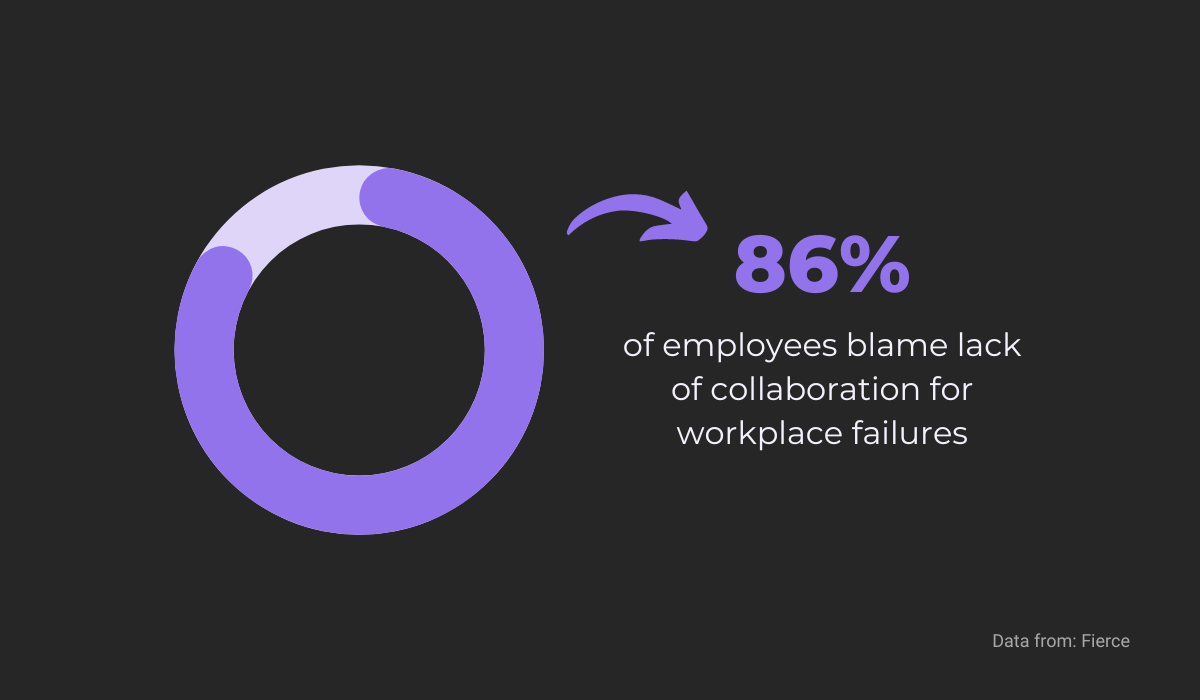
So, can bug tracking improve workload management?
It’s simple—tracking bugs allows everyone to see which ones are a priority, which ones are minor and can be dealt with later, who is responsible for handling which issue, etc.
That way, you can minimize the chances of an uneven workload among your developers and QA team members.
With a good bug-tracking system, there won’t be situations where someone is swamped with work, while someone else has an empty schedule.

Get unreal data to fix real issues in your app & web.
Also, it reduces time wasting that can happen when employees aren’t clear on their responsibilities, as well as situations where multiple people work on the same bug.
For example, Cristina Escalante, COO of the software company The SilverLogic, advises using a simple tool such as a spreadsheet.
By far, the simplest way to keep track of bugs is in a spreadsheet accessible to the entire team.
If you want to create a spreadsheet, you can use tools suited specifically for bug tracking.
For instance, Jotform offers various forms and templates that you can use, including the one for bug tracking.
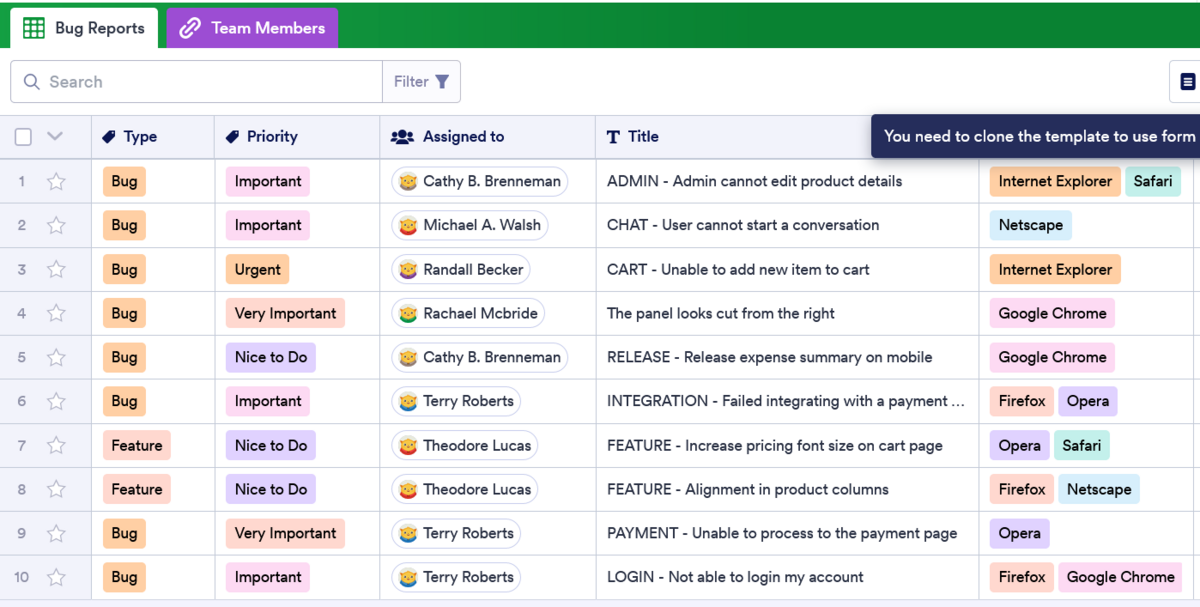
As you can see, the form is simple, color-coded, and easy to read.
There are columns that show the type of issue, how prioritized it is, who is responsible for it, etc.
That way, the team can know the status of various bugs at every moment and distribute the workload.
Furthermore, as you can see below, the bug tracking form contains more information that can be helpful for the team, like a description of the bug and whether it is fixed or not, which prevents duplicate work.
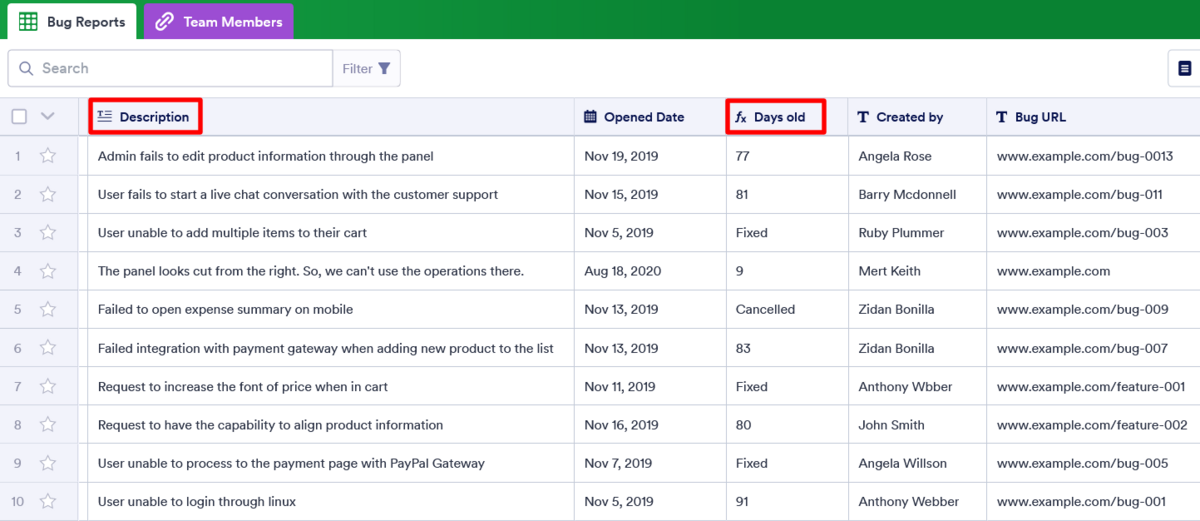
Following a formal bug-tracking system like that can significantly help with workload management.
The team can ensure that every bug is identified, assigned to a team member, and fixed in a timely manner.
More efficient team workflow
Successful software development considerably relies on the efficiency of the team’s workflow.
To be able to keep up with the competition in the market, the demands of the customers, as well as the demands from the upper management in their company, software development teams need to have a system with little to no bottlenecks.
In other words, their workflow should really be uninterrupted.
That’s one of the main reasons why Agile is so popular in software development.
Its focus on adaptiveness, response to change, and continuous flow align with the demands that software development teams face.
Bug tracking also fits well in the way of working that emphasizes responsiveness and a streamlined workload.
Dealing with bugs is a major part of a developer’s job. According to research from Rollbar, 26% of developers spend up to half of their time fixing bugs.
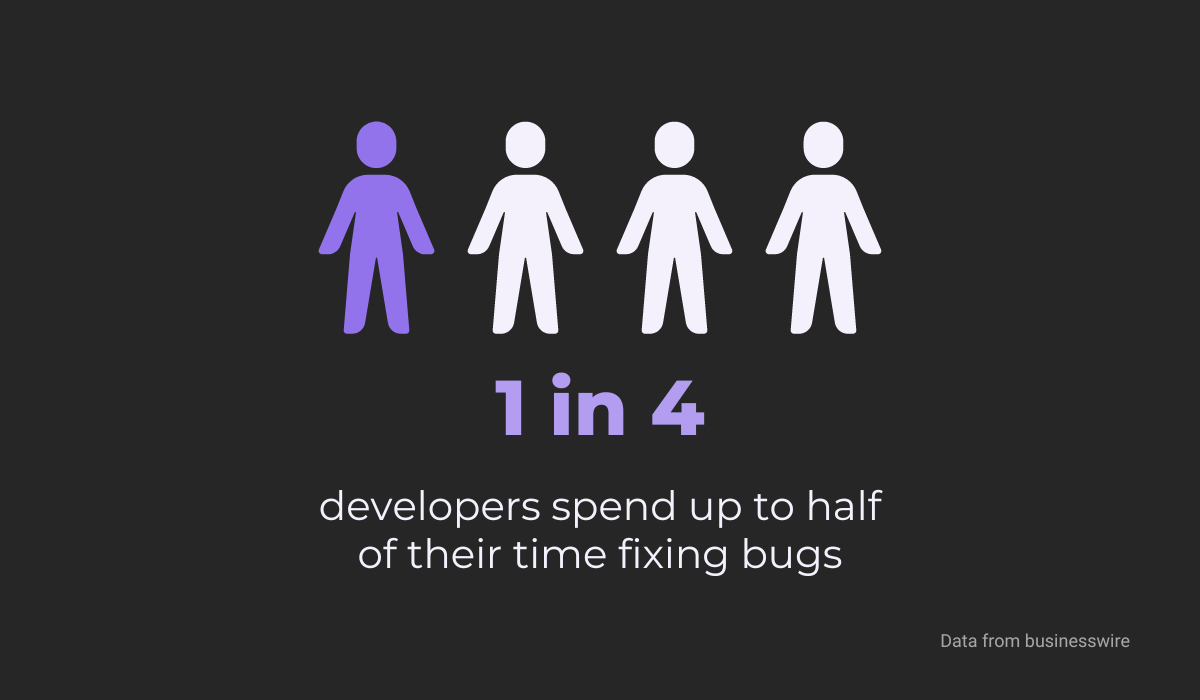
And it’s far from their favorite part of the job.
The same research indicates that fixing bugs and issues is the biggest pain point for nearly half of the developers.
It’s not hard to see why they dislike it. Among other factors, fixing bugs reduces the time they can spend on doing the developing part of software development and writing code.
However, fixing bugs is immensely important, and bug tracking can make that process more efficient, leading to developers spending less time on it.
One of the ways to achieve that is by using a great bug-reporting tool like Shake.
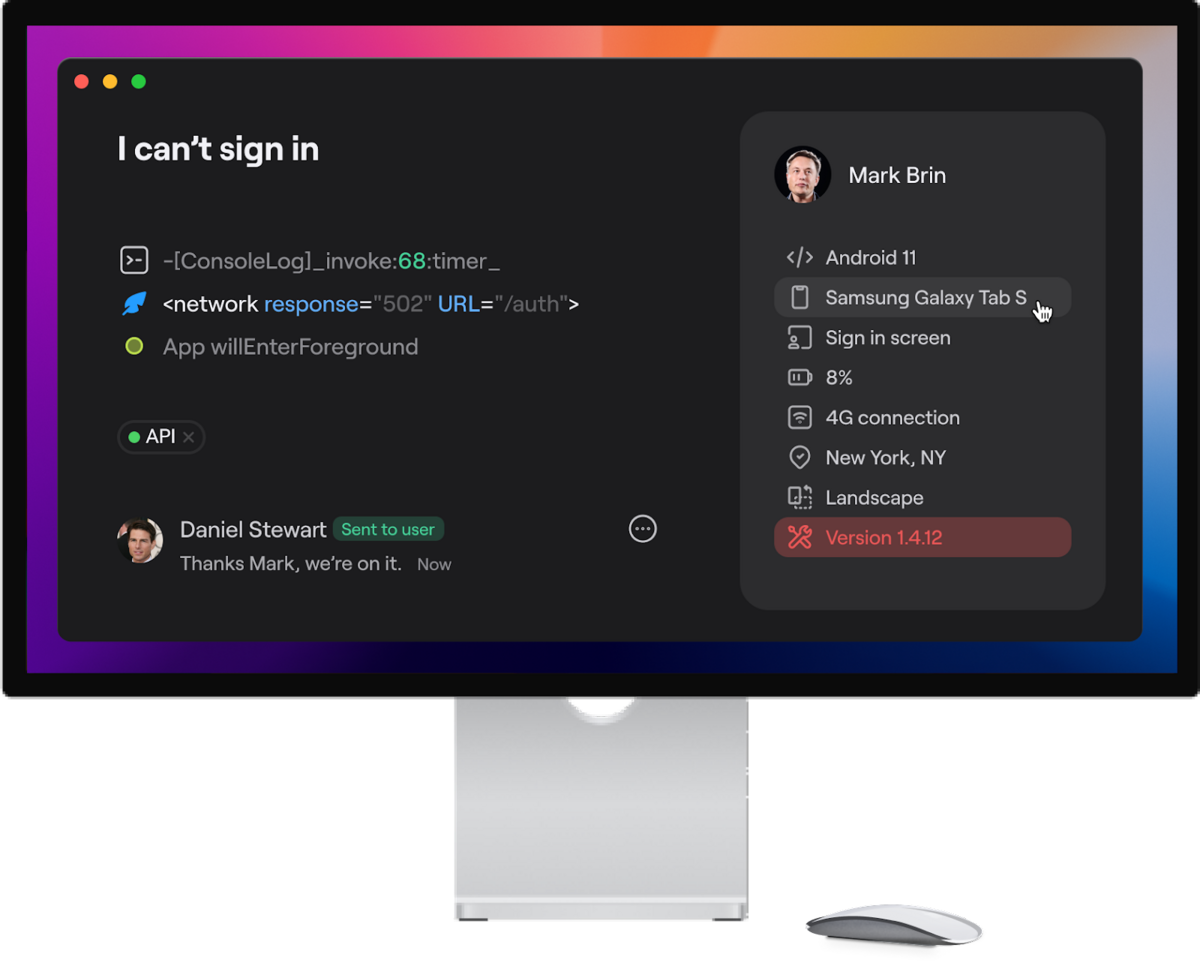
Shake automatically creates bug and crash reports and attaches dozens of data metrics that help developers track the bug and fix it faster.
That way, they don’t waste time asking the user for vital information like the device and OS they use or the data that users might not even know how to access, like memory usage.
In short, by using Shake, there is no danger that fixing bugs will slow everything else down.
Tracking and resolving bugs becomes a part of a well-oiled software development workflow.
Improved product quality
Bug tracking is one of the main prerequisites for delivering a high-quality software product.
That’s because bug tracking is essential to an efficient quality assurance process.
By tracking bugs, you identify them, report on them, follow them, and ensure they are fixed.
In other words, you are making sure that the product you provide to your customers doesn’t have any unwanted issues and that it functions as intended.
Of course, it goes without saying that every software developer wants to deliver code with the least possible amounts of bugs.
However, there are limits to that goal. Bugs are inevitable in the process of software development.
For instance, in his book A Discipline for Software Engineering, Watts Humphrey estimates that, on average, a developer makes up to 150 errors on every 1000 lines of code.
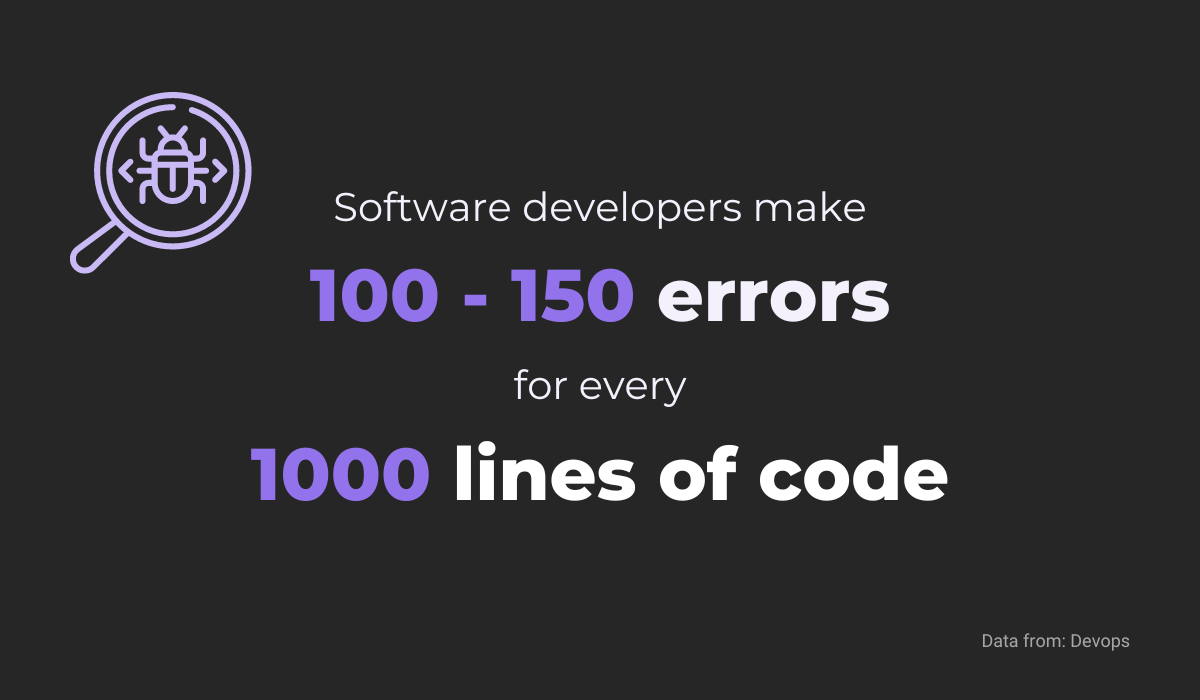
Some developers might make more and some significantly less, but the idea of error-free code is utopian.
That’s what the team from software development company SteelKiwi explains in their article on Hackernoon.
In essence, regardless of the amount of testing, there will always be bugs because you can’t control the environment in which the customers will use the product.
End users will almost always find bugs and problems given all the different computer and mobile configurations out there.
Therefore, a bug-tracking system is crucial.
A code completely free of errors and bugs isn’t realistic, so bug tracking becomes something that can significantly improve the quality of the end product.
And it comes as no surprise that a low-quality product riddled with bugs isn’t something that appeals to customers.
According to a QualiTest survey, 88% of app users would abandon an app because of bugs and glitches, and 51% would abandon it if they experienced those issues at least once a day.
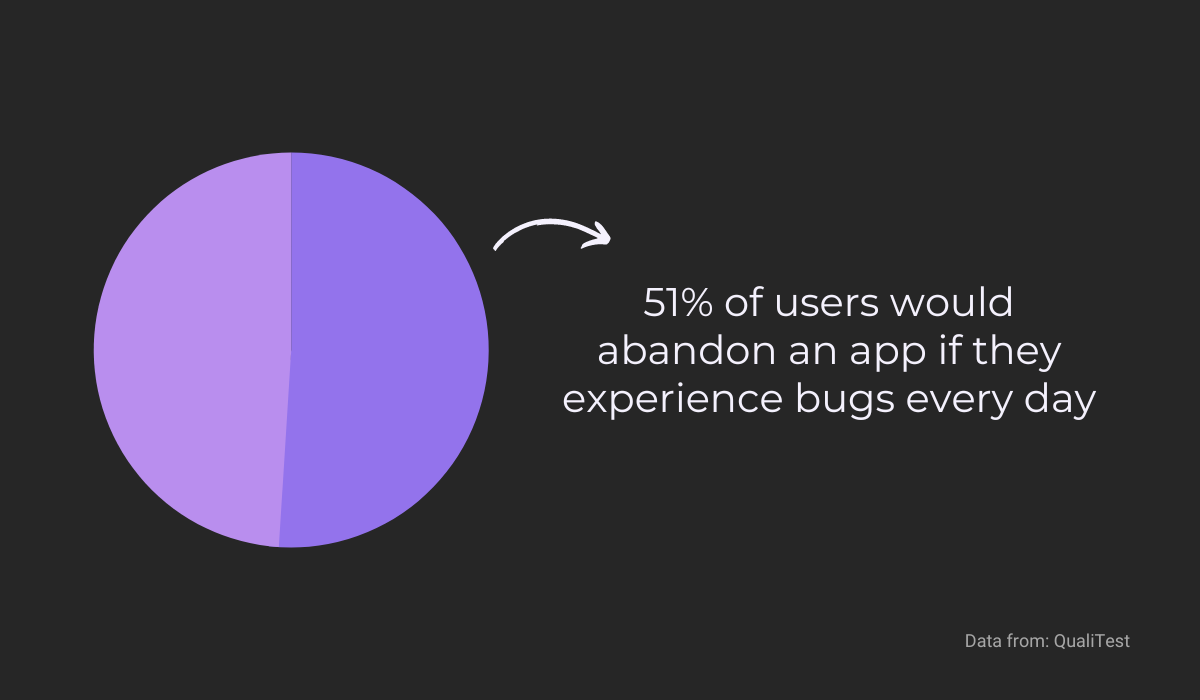
Bug tracking can help you deliver a top-notch product to users and avoid those issues.
By keeping bugs under control in an organized system, you can eliminate most, if not all, of them, giving your users all the reasons to stick with your product.
Increased customer satisfaction
As we mentioned earlier, customers don’t have endless patience with bug-infested software products.
They want a quality product that meets their needs and expectations, works as intended, and brings them value.
When they find such a product, their satisfaction brings multiple benefits to your company. First, satisfied customers can become long-term customers, which means more steady revenue.
In addition to that, there’s a good chance that they will recommend the product to others and bring you more customers and more revenue.
That isn’t just a guess. Word-of-mouth marketing can be powerful, especially when anyone can give their opinion on the product in many online channels.
For example, one Reddit user asked what some must-have programs for a new computer are, and the recommendations were numerous.
Below, you can see one of them that was backed up with nearly 2000 votes.

And people love to give recommendations.
That’s especially true if they’ve had a great experience with a product.
According to the Chatter Matters Word of Mouth Report by Talk Triggers, 71% of respondents make a recommendation for that reason.

On the other hand, just as the internet can facilitate spreading recommendations about a quality product, it can also call attention to bugs and glitches in the product.
For example, last year, TikTok had a major issue where many users reported that all their followers had disappeared, and some couldn’t access the app.
Soon, the problem was trending on social media, with many angry users venting their frustrations.

It was later discovered that there was a bug in the system, and the company resolved it overnight.
However, better bug tracking could have prevented the issue and the following viral outrage of unsatisfied users.
Although TikTok is too big of a company not to bounce back from a bug like that, for most SaaS companies, something similar could mean a severe hit to their reputation and revenue.
As Martin Kubu, head of the digital marketing agency UP for IT, explains, keeping customers satisfied is crucial.
It would be easy for companies to make the sale and move on to the next one. But replacing customers is always more expensive than keeping your existing customers loyal and happy.
Tracking bugs and resolving them, delivering a high-quality product, and maintaining it, is a surefire way to keep your customers happy and satisfied.
Higher return on investment
Return on investment (ROI) might not be the first thing on software developers’ minds when creating a product.
Their job is to make a fully functional software product that customers love to use.
However, ROI is undoubtedly a vital element for any company, including a software development one.
Simply put, when the ROI is high, the company profits more, allowing developers more resources to make even better products.
Bug tracking can significantly help with increasing ROI.
When bugs are under control, that lowers the production cost—less time is wasted on identifying and fixing them, they are dealt with faster, and it’s easier to catch them before they become a big and costly problem.
How costly can it become? Much more than if it was detected and fixed early, before the product release.
According to one IBM study, fixing defects after product release can be up to 15 times pricier.
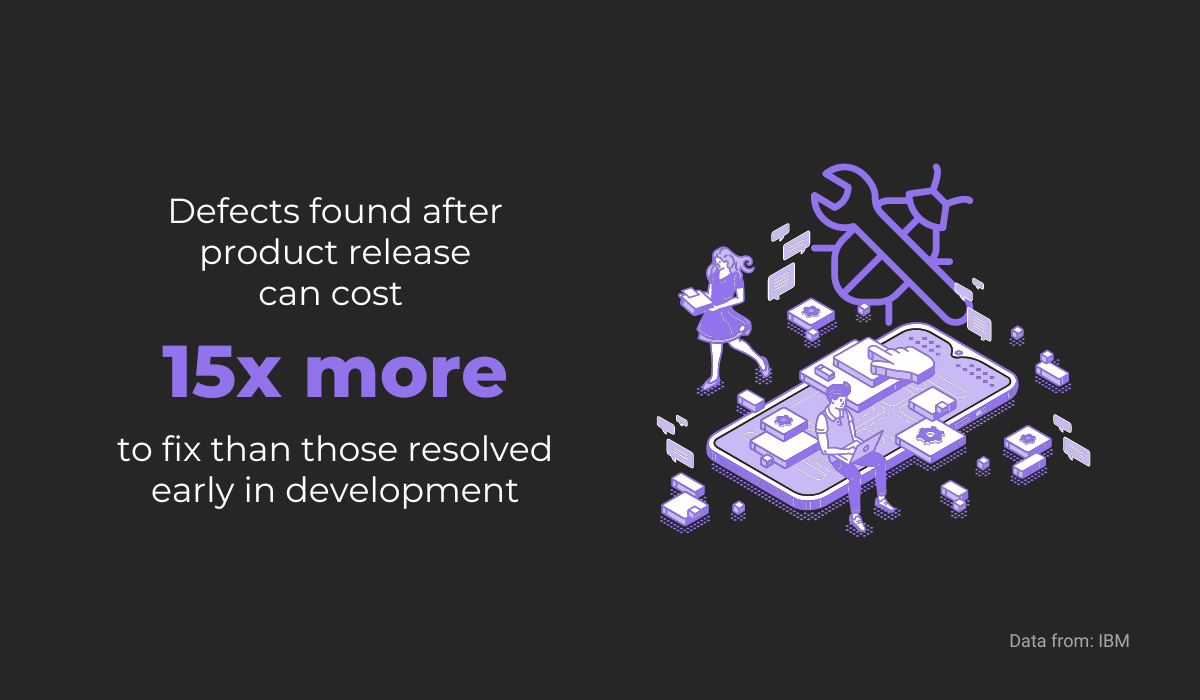
And that’s where we come to bug tracking for help because, with a proper bug-tracking system, you can solve those bugs before they become significant problems, leading to lower costs and higher ROI.
For instance, meticulous bug tracking can prevent situations like recalling more than a million Tesla vehicles due to a bug in the software that controls the window automatic reversal system.
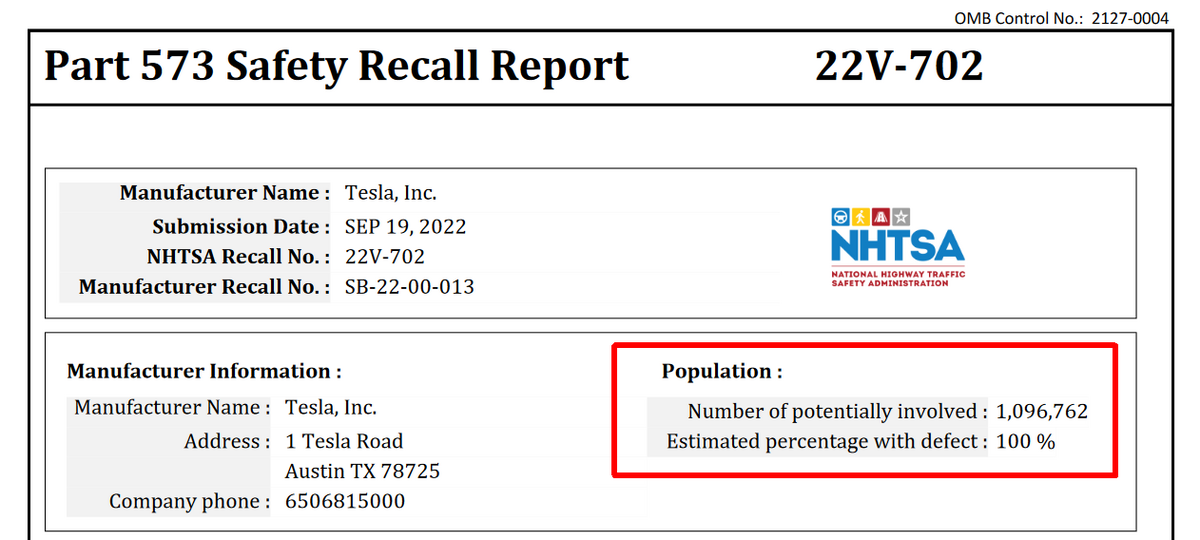
Although Tesla usually solves bugs like that with a software update without having to remove vehicles from the roads, they still cost them millions of dollars.
For instance, according to Reuters, their stock was 3,5% down on the same day.
That trend continued and was documented on social media.

Software bugs will rarely cost that much money to fix unless you’re a giant company like Tesla.
However, even smaller costs can accumulate over time if you don’t have an efficient bug-tracking system.
To achieve higher ROI, you need to mitigate the costs of repairing problems, and an excellent way to do that is to catch them early in development.
Tracking bugs will allow you to do precisely that.
Conclusion
There are many benefits of bug tracking, and we hope we’ve shown you how priceless they can be.
Bug tracking can impact virtually every aspect of the software development process and beyond.
When you combine better workload management, efficient team workflow, improved product quality, increased customer satisfaction, and higher return on investment, you can get the results that any software company strives for.
And bug tracking is an essential vehicle to those results.



